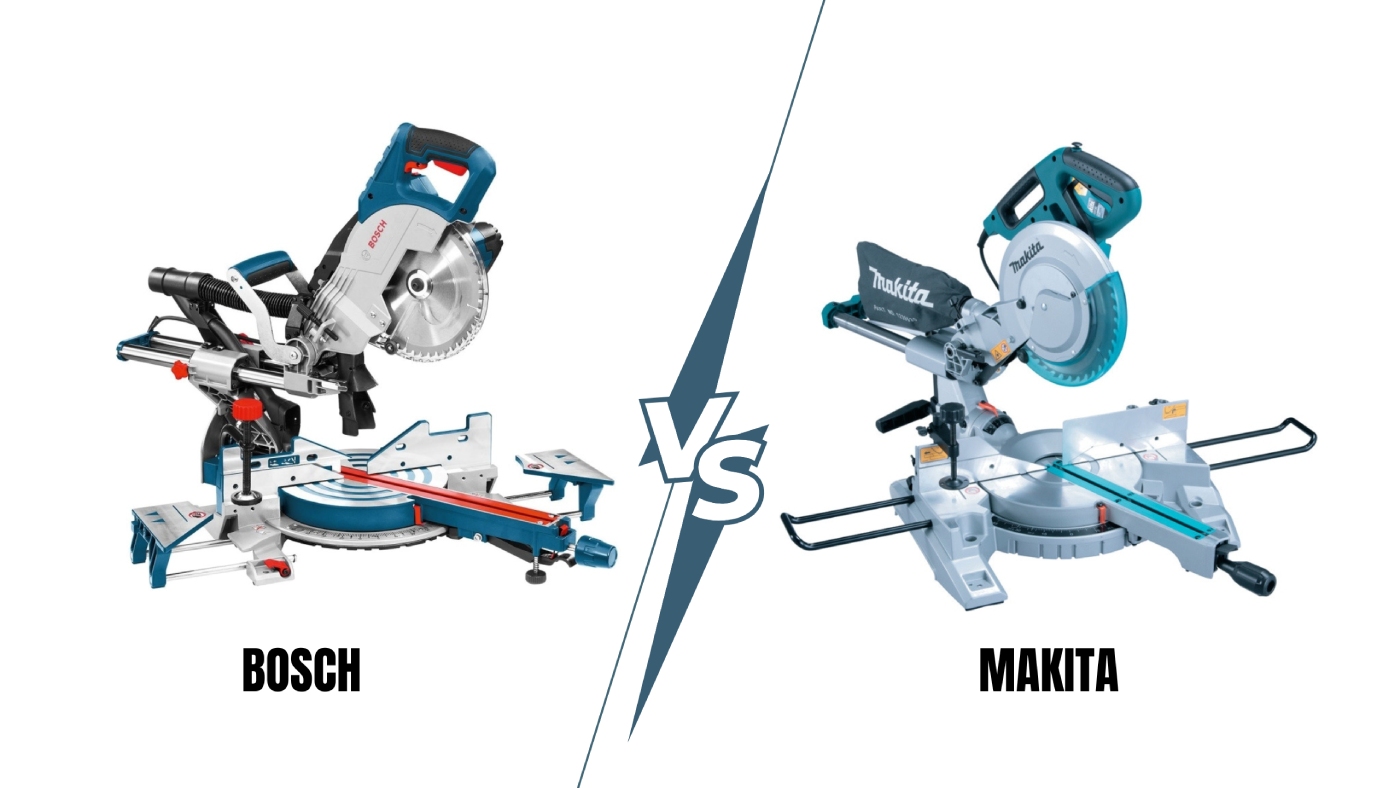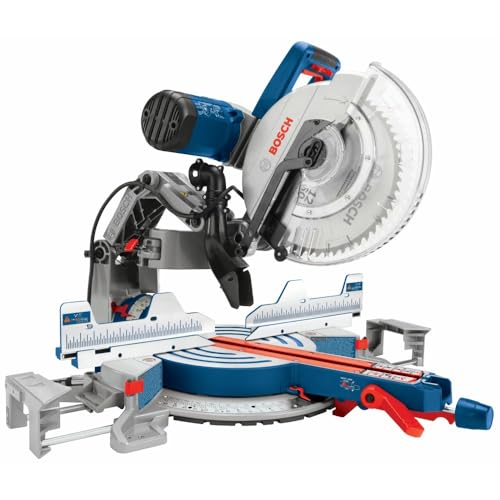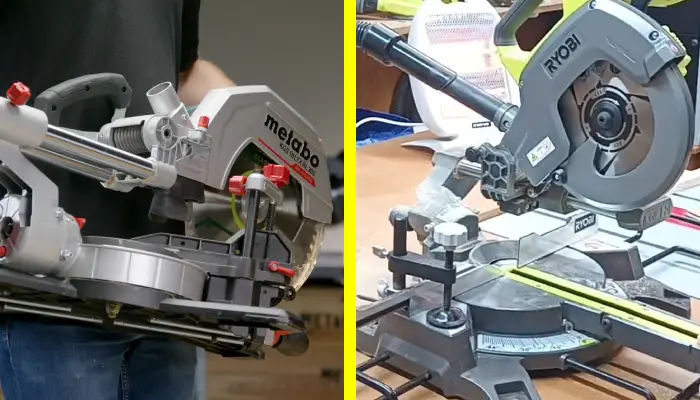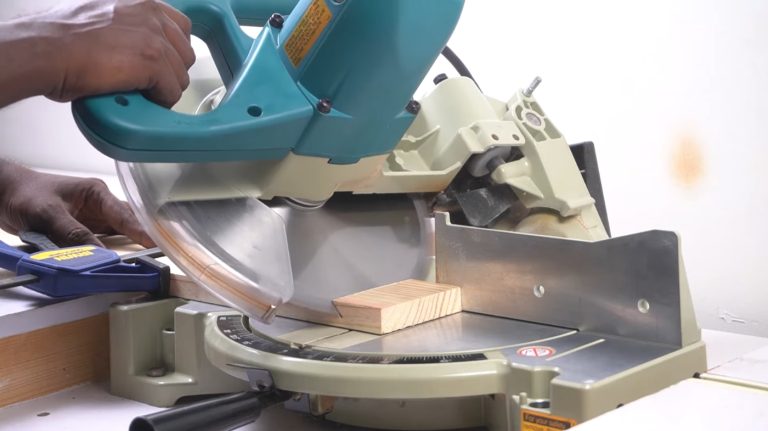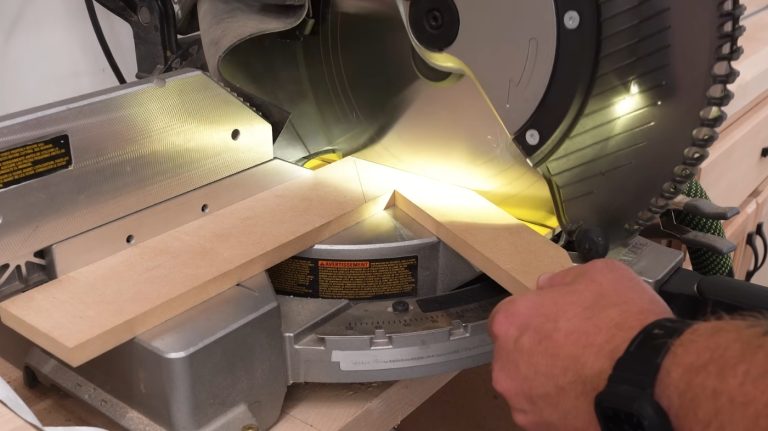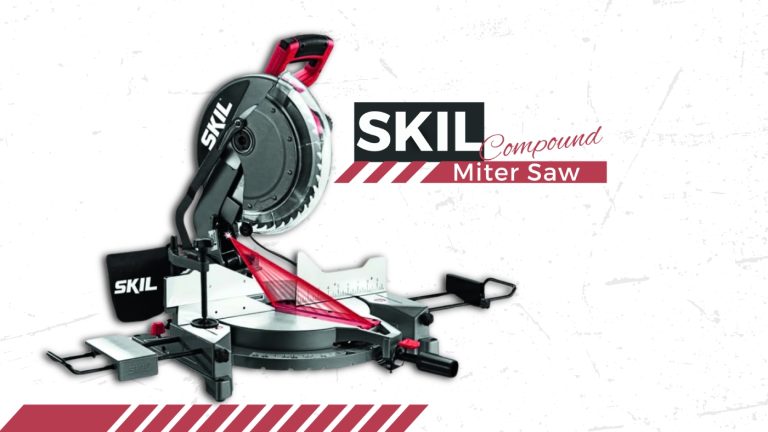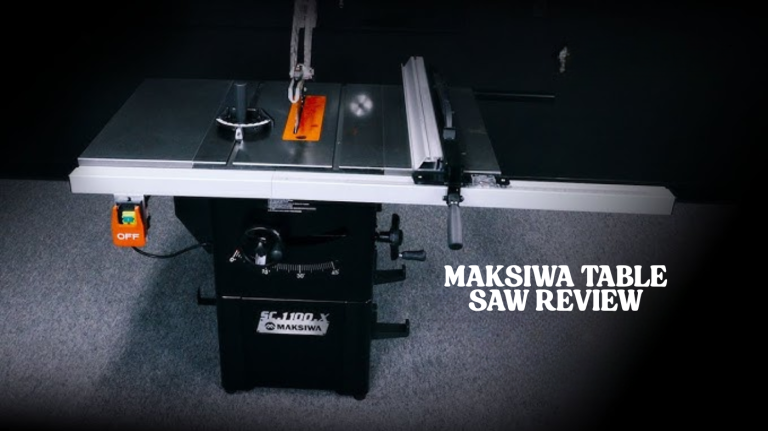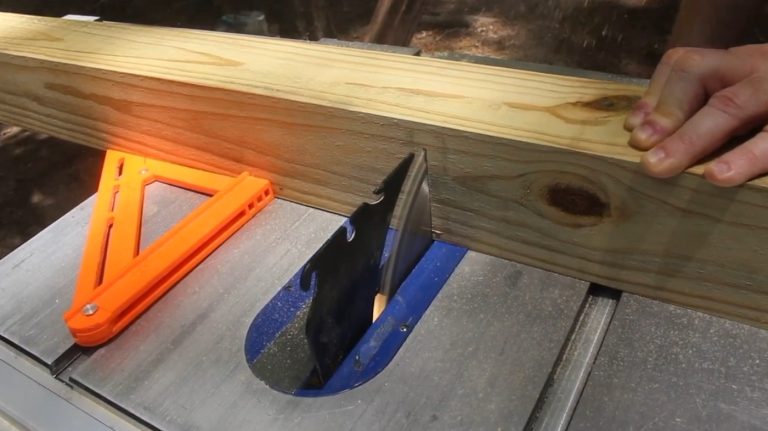Bosch vs Makita Miter Saw: Key Differences You Need to Know
When you compare Bosch and Makita miter saws, you notice both deliver exceptional features for precision cutting. Bosch’s GCM12SD includes the innovative Axial-Glide system for enhanced accuracy and portability, while Makita’s LS1019L utilizes a unique direct drive system for smooth operation.
With respect to cutting capacity, both excel, but Bosch offers a wider miter detent range. Dust collection isn’t as efficient in Bosch models, while Makita’s system proves superior.
Ultimately, your choice may depend on specific needs and preferences. Stick around to uncover deeper insights on these two popular brands and their unique advantages.
- THE BOSCH GCM12SD IS A 12 IN. DUAL-BEVEL GLIDE MITER SAW THAT FEATURES A SMOOTH CUTTING MOTION,…
- PRE-ALIGNED SQUARELOCK FENCES HELP THE SAW MAINTAIN PRECISION THROUGHOUT ITS LIFELife
- A SOFT-GRIP AMBIDEXTROUS HANDLE ALONG WITH A COMBINATION DUST CHUTE AND VACUUM ADAPTER ADD TO USER…
- Unique 2-steel rail sliding system design offers single slide-glide operation; reduced saw footprint…
- Increased capacity for up to 8″ Crown molding (vertically nested), 6-3/4″ baseboard (vertical), and…
- In-front bevel lock for convenient operation
Key Takeaways
- Bosch miter saws feature a 15 Amp motor with a no-load speed of 4,000 RPM, while Makita utilizes a soft-start motor for better control.
- Bosch incorporates the Axial-Glide System for enhanced cutting precision, whereas Makita uses a patented 4-steel rail sliding system to minimize deflection.
- Both brands offer similar cutting capacities, but Bosch provides a wider miter detent range for versatile cutting angles compared to Makita.
- Bosch’s built-in dust collection is often criticized for inefficiency, while Makita’s system is more effective with a larger dust boot.
- User preferences vary, with Bosch favored for control features and Makita for smooth operation, reflecting distinct strengths in design and usability.
Overview of Bosch Miter Saws
Bosch miter saws are designed to deliver precision and versatility for a range of cutting tasks. Equipped with a robust 15 Amp motor, these saws achieve no-load speeds of 4,000 RPM, ensuring efficient cutting performance.
The 12-inch blade allows you to tackle diverse applications, while the bevel angle range of 47° left and right facilitates precise bevel cuts. You’ll appreciate the pre-aligned SquareLock fences that maintain accuracy over time, enhancing your overall cutting experience.
The ergonomic, ambidextrous soft-grip handle makes operation comfortable, reducing fatigue during extended use. Additionally, Bosch miter saws are recognized for their compact design, which enhances space efficiency in smaller workshops.
In terms of performance, Bosch miter saws offer a cross-cut capacity of up to 14 inches and can handle crown molding up to 6 inches at a 45° spring angle.
The integrated Axial-Glide system ensures wider cross-cuts and smooth glide action, while the dust collection system efficiently manages debris. This unique design allows for space-saving operation, making it ideal for smaller workshops.
For adjustments, upfront bevel controls and an all-metal bevel lock lever simplify settings. With adjustable miter detents and a push-button miter detent override, fine-tuning angles becomes effortless.
Overview of Makita Miter Saws
Delivering exceptional performance and versatility, Makita miter saws are engineered to meet the demands of both professional and DIY users alike.
With a wide range of models, these saws cater to various application needs, ensuring you find the right tool for your projects. Notable features include:
- Deep and Exact Cutting Technology (DXT) for enhanced vertical cutting capacity.
- Direct drive gearbox eliminates belts, preventing slippage and maintenance issues.
- Patented 4-steel rail sliding system with linear ball bearings minimizes deflection for smooth cuts.
- Built-in lasers and LED lights enhance precision during cutting.
The direct drive motors provide a smoother startup and consistent power, while the electronic speed control maintains performance under load.
Additionally, models like the LS1219L offer an impressive increased vertical cutting capacity that allows for cutting larger materials such as baseboards and crown molding. This feature is particularly beneficial for intricate designs that require precise measurements and cuts.
Models like the LS1219L impress with their ability to achieve 15″ crosscuts at 90 degrees, showcasing their high performance.
Plus, the dual dust collection ports and ergonomic designs improve usability, making these saws not just powerful but also user-friendly.
Design and Build Comparison
When comparing the design and build of Bosch and Makita miter saws, distinct engineering philosophies emerge that cater to different user needs and workspace requirements.
Bosch’s unique Axial-Glide System features control arms that allow smooth sliding motion, enhancing cross-cutting accuracy while minimizing space requirements.
The ergonomic controls, including a front-mounted lever and ambidextrous trigger, streamline operation for users of all skill levels.
Weighing 52.2 pounds, it’s portable enough for various projects without sacrificing stability. Additionally, Bosch saws are known for their effective dust collection, helping maintain a clean work area during operation. This design also contributes to the saw’s overall maintenance and durability, ensuring it remains efficient over time.
In contrast, Makita employs a telescoping “stairstep” railing system that prioritizes stability and accuracy, making it ideal for professional users. The extensive table area and tall fence support larger workpieces, but this design increases its footprint, requiring more workspace.
While the locking mechanism for adjustments may seem counterintuitive at first, it becomes efficient with practice. The Makita model, with its focus on performance, lacks the compactness seen in Bosch’s design, making it better suited for dedicated shop settings rather than portable use.
Cutting Capacity Analysis
In evaluating cutting capacity, both Bosch and Makita miter saws demonstrate impressive specifications that cater to a variety of woodworking tasks.
When comparing their cutting capabilities, you’ll find several similarities that stand out, particularly in their maximum cut capacities at various angles. Both brands allow for significant flexibility in your projects.
Here are some key points to reflect on:
- Identical 0° Miter 0° Bevel Cutting Capacities: Both saws handle 3-1/2″ x 13-1/2″.
- Identical 0° Miter 45° Left Bevel Cutting Capacities: Both can cut 2″ x 13-1/2″.
- Identical 0° Miter 45° Right Bevel Cutting Capacities: Both offer 1-1/2″ x 13-1/2″.
- Identical 45° Miter 0° Bevel Cutting Capacities: Both achieve 3-1/2″ x 9-1/2″.
While both models excel in standard cuts, be aware of their limitations regarding dimensional lumber sizes and specific angles. Additionally, the Axial-Glide System in the Bosch saw enhances alignment and allows for wider crosscuts, making it an excellent choice for larger projects.
The cutting precision features in both brands are designed to meet the needs of professionals and serious hobbyists alike. You’ll also want to reflect on how each saw performs with different types of molding.
Motor and Performance Features
When comparing the motor power of Bosch and Makita miter saws, both feature robust 15 Amp motors, but their speed control mechanisms differ.
Bosch offers a no-load speed of 4,000 RPM, while Makita utilizes a soft-start motor to enhance user control during initial cuts.
Additionally, Bosch’s saw incorporates Bosch-exclusive Axial-Glide technology, which improves cutting precision and expands cross-cut capabilities.
Both brands are recognized for delivering reliable performance in their respective categories, ensuring users can achieve high-quality results.
Motor Power Comparison
Comparing the motor power and performance features of Bosch and Makita miter saws reveals distinct advantages for each brand.
Both brands are equipped with robust 15 amp motors, but Bosch offers a more powerful option with a 2000W motor in select models, compared to Makita’s 1800W. Both saws reach a no-load RPM of 3800, ensuring high cutting efficiency.
Here’s a breakdown of key motor power features:
- Bosch: Electric motor brake for quick stops and a soft-start feature for smooth power-up. Bosch’s commitment to advanced safety features enhances user confidence during operation.
- Makita: Soft-start feature included, with quick stop functionality implied but not explicitly mentioned. Additionally, Bosch’s articulating arm design allows for space-saving capabilities, making it a practical choice for smaller workshops.
When considering overall performance, Bosch’s Axial-Glide™ system provides a smooth sliding motion, whereas Makita’s unique rail system enhances stability.
Both brands offer similar miter and bevel ranges, with Bosch slightly edging out in bevel angles.
Speed Control Mechanisms
The speed control mechanisms of Bosch and Makita miter saws especially influence their performance and usability. Both brands equip their saws with powerful 15 Amp motors, ensuring consistent cutting power. However, they differ in start-up speed and precision.
Here’s a comparison of their key features:
| Feature | Bosch | Makita |
|---|---|---|
| No-Load Speed | 4,000 RPM | Generally 4,000 RPM |
| Start-Up Speed | Fast, slight jerk | Smooth, controlled start |
| Detent Quality | Some slop in detents | Tight, positive detents |
| Dust Collection | Efficient system | Effective with rear boot |
Bosch’s quick start-up may be advantageous for rapid cuts, but the jerkiness might be an issue for precision.
Makita’s adjustments offer more control, thanks to its ambidextrous safety switch and clear detent markings, making it user-friendly. Regarding dust management, both saws excel, enhancing your overall cutting experience.
Controls and Adjustability
Steering the controls and adjustability of miter saws is vital for achieving accurate cuts and maximizing efficiency. Both Bosch and Makita offer distinct features that cater to different user preferences and work styles.
You’ll find that Bosch provides a wider range of miter detents and a more straightforward control layout, which can lead to quicker adjustments.
Consider these key differences:
- Miter Detent Range: Bosch offers 60° right detent, while Makita maxes out at 45°.
- Bevel Detent Variety: Bosch’s options are more extensive compared to Makita’s.
- Control Accessibility: Bosch has upfront bevel controls, which are easier to reach than Makita’s rearward control.
- Motor Start-Up: Makita’s soft-start feature guarantees a smoother operation compared to Bosch’s slightly jerky start.
While Makita features a tall fence for better support of larger pieces, Bosch’s Axial-Glide system offers smooth, precise cuts.
Additionally, Bosch’s saw comes with a premium 12-inch 60-tooth blade, ensuring it is equipped for a variety of cutting tasks right out of the box. Corded miter saws are often preferred for heavy-duty tasks due to their consistent power supply, providing a reliable cutting experience.
The choice between these saws hinges on your specific needs for adjustability and control accessibility, making it essential to evaluate both before making a decision.
Dust Collection Systems
When working with miter saws, effective dust collection systems play a significant role in maintaining a clean workspace and enhancing overall efficiency.
The Bosch miter saw features a built-in dust collection system that captures a decent amount of sawdust, yet many users find it insufficient.
You may notice some sawdust escaping around the saw, despite the dust chute pivoting arm designed to direct debris away from the cutting area.
Users often resort to external vacuums to improve dust collection and mitigate the shortcomings of the standard dust bag, which doesn’t capture as much dust as you might like.
Additionally, the Bosch Axial Glide Miter Saw Dust Chute (Gen II) achieves approximately 90% dust collection efficiency, a significant improvement over original dust collection systems.
To enhance performance further, considering a high capture rate dust collection solution could be beneficial.
In contrast, the Makita saw boasts a more efficient dust collection system, thanks to its larger boot behind the fence, making it more effective overall.
While both saws can benefit from external vacuums, the Bosch’s design tends to prioritize precision and ease of use rather than dust collection efficiency.
If you’re considering the Bosch, know that aftermarket modifications or custom solutions, like the Rousseau 5000 hood, may help enhance its dust collection capabilities.
Weight and Portability
Weight and portability are essential factors to take into account when choosing a miter saw, especially for those who frequently move their tools between job sites.
When comparing Bosch and Makita, you’ll notice significant differences in weight and design that affect usability.
- Bosch models range from 37 to 65 lbs, with features like top carry handles and adjustable stabilizing feet for improved portability.
- The Bosch CM8S, at 37 lbs, is compact and designed for easy transport, while the GCM12SD, weighing 65 lbs, offers heavy-duty construction for professional use.
- Makita’s LS1040 stands out at just 27 lbs, prioritizing lightweight construction and ease of setup, ideal for smaller projects.
While Bosch provides multiple models with varied portabilities, Makita’s single model focuses on delivering high performance in a lighter frame.
Additionally, Bosch’s models feature an expandable work surface that enhances support during cuts, further emphasizing their design for usability across various tasks.
Accessories and Included Tools
Choosing the right accessories and tools for your miter saw can greatly enhance your woodworking experience. Both Bosch and Makita come equipped with standard accessories, such as a 12″ 60-tooth carbide-tipped blade, a wrench for maintenance, and a toolless vertical work clamp.
Bosch includes a dust bag for basic dust collection, while a vacuum adapter elbow allows connection to external systems. However, Bosch’s dust collection isn’t as efficient as Makita’s, which is an essential consideration for cleaner workspaces.
Dust collection capabilities are reported as subpar for both models, and user dissatisfaction with dust collection on Bosch miter saws has been noted.
For specialized add-ons, you can enhance either saw with options like a dust deputy separator or compatible 12″ blades for various materials.
Makita offers a laser guide for precision, absent in Bosch’s setup, while Bosch features an axial-glide mechanism for smooth cuts, contrasting with Makita’s rail system.
Both brands provide intuitive controls with Bosch’s all-metal bevel lock lever and clear lower guard for visibility.
Cutting Precision and Quality
Many users find that cutting precision and quality are paramount when selecting a miter saw, and the Bosch and Makita models offer distinct advantages in this area.
Both brands have built a reputation for delivering accuracy and reliability, making them popular choices among professionals and DIY enthusiasts alike.
Recent testing shows that over 100 saws were evaluated for performance, with a focus on cut precision across various materials. Miter saws are particularly effective for precise cuts in woodworking, allowing for intricate designs.
Bosch Advantages:
- The Bosch GCM12SD features a dual-bevel capability and a laser cutline for precise cuts.
- Its axial glide system guarantees smooth and precise movement.
- The CM8S is noted for handling thick and detailed cuts with ease.
- Bosch’s efficient dust collection system helps maintain accuracy by minimizing debris.
Makita Advantages:
- The Makita LS1019L has a powerful motor and a unique drive system for precision.
- Its dual-bevel capability and soft-start feature enhance accuracy.
- Users appreciate the reliable miter adjustments across models.
- Like Bosch, Makita’s dust collection system effectively reduces debris, preserving cutting quality.
Ease of Use
In evaluating ease of use, both Bosch and Makita miter saws exhibit features designed to enhance user experience and efficiency.
The Makita LS0815F stands out with its direct drive motor, which minimizes vibration and promotes better energy transfer. Its soft start feature ensures a smooth, safe startup, while the ergonomic design reduces user fatigue and enhances control.
You’ll appreciate the fine miter adjustments, allowing for precise cuts without the hassle of detents. Additionally, the weight of the Makita LS0815F makes it easy to maneuver on job sites, further enhancing its user-friendly appeal.
On the other hand, Bosch miter saws, like the GCM12SD, offer upfront bevel control, enabling easy adjustments without awkward reaching.
With nine miter detents, the Bosch saw simplifies common cuts, and the thumb-actuated miter detent override allows for flexibility with non-standard angles.
Portability and Weight
Taking into account the importance of portability and weight in miter saws, both Bosch and Makita present distinct advantages that cater to different user needs.
If you prioritize transportability, lighter models like the Bosch CM8S, weighing only 37 lbs, shine due to their ergonomic design. Additionally, weight distribution plays a crucial role in making heavier models like the Bosch GCM18V-12GDCN more manageable with the right supports.
Here are some key aspects to reflect upon:
- Weight: Lighter models are easier to handle and transport.
- Cordless Convenience: Models like the Bosch GCM18V-12GDCN provide freedom but can be cumbersome without a rolling stand.
- Design: Ergonomic handles enhance portability, making it easier to move between job sites.
- User Feedback: Home users often favor lightweight saws, while professionals may accept extra weight for enhanced performance.
Frequently Asked Questions
How Do the Miter Saws Perform in Professional Settings?
In professional settings, miter saws excel in smooth operation and control, ensuring precise cuts.
You’ll find models with efficient dust collection systems, enhancing workplace cleanliness. Their powerful motors deliver quick, accurate results, making them reliable for heavy-duty tasks.
Additionally, features like adjustable bevels and robust construction provide durability and ease of use.
What Is the Average Lifespan of Bosch and Makita Miter Saws?
On average, miter saws can last between 5 to 10 years, depending on usage and maintenance.
For regular use, Bosch miter saws typically last about 5-8 years, while Makita models often reach 6-10 years.
The quality of the blade, heavy-duty applications, and maintenance practices all impact their lifespans.
Regular cleaning, lubrication, and calibration are essential to extending your saw’s life, ensuring consistent performance over the years.
How Do Noise Levels Compare Between Bosch and Makita Miter Saws?
When comparing noise levels of miter saws, you’ll find that both Bosch and Makita models typically register between 100-105 dBA.
Bosch operates at 102 dBA, while Makita’s level is slightly higher at 103 dBA.
These levels can pose health risks, so prolonged exposure necessitates hearing protection.
Additionally, noise can vary depending on the workload and specific model, emphasizing the importance of monitoring noise levels regularly for safety.
Bosch vs Makita Miter Saw: Choose the One That Fits Your Needs Perfectly
In the Bosch vs. Makita miter saw debate, both brands offer impressive features that cater to different user needs. Notably, studies show that 80% of professional woodworkers prefer one brand over the other based on specific cutting tasks.
Bosch is often favored for its user-friendly design and robust dust collection, while Makita excels in portability and power. Ultimately, your choice should hinge on your specific project requirements and personal preferences, ensuring you select the saw that best suits your workflow.
- CONVENIENT: The Bosch CM8S features a bevel lock lever and bevel turret stops located on the side of…
- SUPPORTIVE: The miter saw provides an integrated expanding base extensions that expands up to…
- CONVENIENT: Features a miter detent override, an intuitive, easy to access thumb-actuated override…
- 10″ slide miter saw with the Crown molding cutting capacity (6-5/8″ nested) of a 12″ miter saw
- Linear ball bearing system engineered to deliver “dead-on” accurate cuts
- Innovative direct drive gearbox and guard system is engineered for increased vertical cutting…
Last update on 2025-12-23 / Affiliate links / Images from Amazon Product Advertising API

